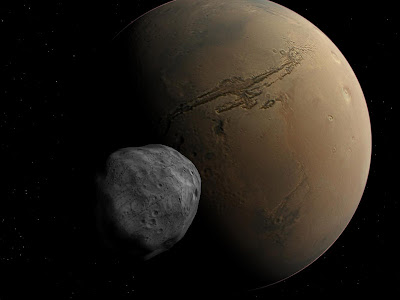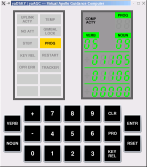We found a number of links to a number of groups, like us, with plans to enter the
Google Lunar X PRIZE (GLXP) on the
Space Prizes blog. Below is a brief summary of their plans.
Good luck to all you future team.. we hope to see you in the GLXP soon!
InterPlanetary Ventures - "InterPlanetary Ventures has formed an international team to compete in the Google Lunar X PRIZE .... The team includes organizations and individuals from many different countries, promoting international cooperation in space by working together in the development of a spherical robotic rover and an automated moonbase to complete the contest requirements. "
Organization for Scientific Investigation and Research (OSIR) - "..is an international non-governmental voluntary organization established for quest of science in true nature. It have members from over 150 countries all over the world... The O.S.I.R. is ready to sponsor fully along with providing complete technical aid to a team for Google Lunar X PRIZE under the banner of O.S.I.R. The O.S.I.R. will not only sponsor just the team but also complete building cost, transportation cost, testing cost, prototyping cost of the LUNAR LANDER robot... We have total 7 teams working on the project from different parts of the world. "
Reach for the Moon - Based in the University of Delft in the Netherlands, this group formed as part of a student project... "The Design Synthesis Exercise (DSE) is a design exercise performed at the end of the third year of the Bachelor degree of Aerospace Engineering at the Delft University of Technology. The project is performed by ten students during ten weeks, under guidance of one principal tutor and two coaches. During the project, the students are introduced to the process of designing towards the needs of external clients. "
Team Cringely - led by Robert Cringely, this group started a wiki-based effort to join the GLXP. Eventually they decided not to join. Their reasons are explained
here.
Googlkhod - Originally called MosGIRD, this Russian group "is working on high-altitude liquid-fuelled rockets, with an eye towards development of commercial suborbital rockets and small orbital rockets in the coming years... Now we want to compete in Google Lunar X Prize. Russian Lunokhod was the first roving remote-controlled robot to land on another world. We sure that the first private rover on the Moon will be russian too."
GLXP France.org - Is a (French language) site for the first contact point for French volunteers wanting to form a GLXP team.
Omega Envoy - is a project of Earthrise Space, Inc, "a not for profit organization founded by a group of students and proffesionals in Central Florida with the common goal of advancing private and commercial space exploration. The Omega Envoy project will involve competing in the GLXP, reaching out and hoping to maintain Florida's position as the global leader in the space industry."
Open Luna Foundation - "The Open Luna Foundation aims to return mankind to the moon through private enterprise. Initial goals focus on a stepped program of robotic missions coupled with extensive public relations and outreach. Following these purely robotic missions, a short series of manned missions will construct a small, approximately 6 person settlement based on a location scouted by the robotic missions."
Mission 1 will have "Google Lunar X PRIZE clone-like rovers, delivered by a single lander. The lander will "hop" around to deposit the rovers, similar to an upside down Pez-dispenser. "














 Can the oceans and lake's of planet Earth be useful environments for practicing future lunar exploration?
Can the oceans and lake's of planet Earth be useful environments for practicing future lunar exploration?









 The
The 


 Unlike lunar rovers, Mars rovers have a far greater communications delay to Earth (many minutes) meaning that their route must be pre-programmed with navigation waypoints, hence the lower speed of the MER design.
Unlike lunar rovers, Mars rovers have a far greater communications delay to Earth (many minutes) meaning that their route must be pre-programmed with navigation waypoints, hence the lower speed of the MER design. 

